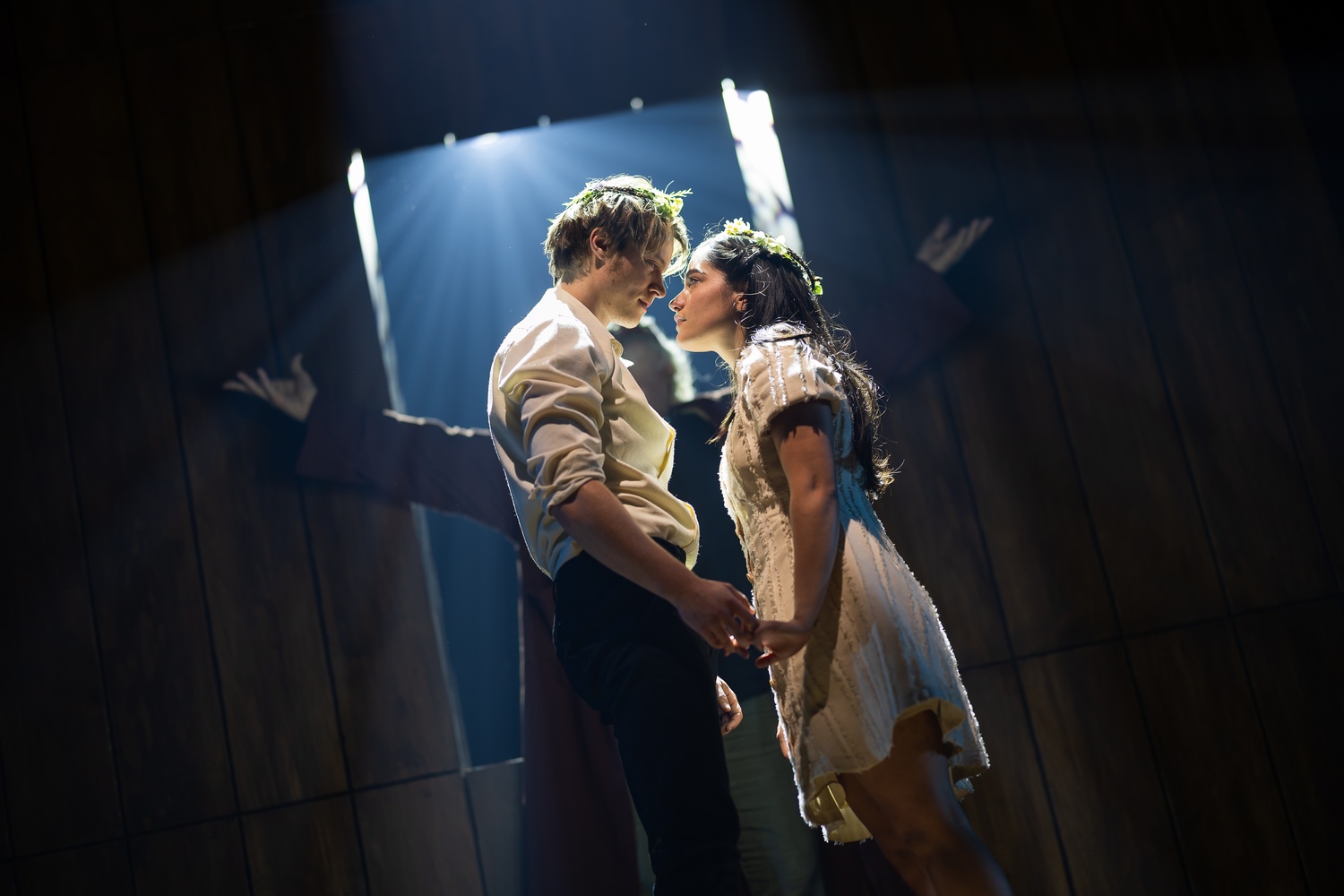
News
Summers Will Not Finish Semester of Teaching as Harvard Investigates Epstein Ties

News
Harvard College Students Report Favoring Divestment from Israel in HUA Survey

News
‘He Should Resign’: Harvard Undergrads Take Hard Line Against Summers Over Epstein Scandal

News
Harvard To Launch New Investigation Into Epstein’s Ties to Summers, Other University Affiliates

News
Harvard Students To Vote on Divestment From Israel in Inaugural HUA Election Survey
‘Romeo and Juliet’ Review: The A.R.T. Keeps It Classic

Shakespeare’s “Romeo and Juliet” is popular. By some accounts, it’s the second-most-performed Shakespeare play in the United States, and to many Americans who are used to high school English class, it’s synonymous with the Bard. Making this well-known work feel new or relevant today is therefore a daunting challenge, but the American Repertory Theater’s latest production of the tragedy revitalizes the play’s relatability and excitement. Although the play has some purported aims that don’t feel fully realized, the A.R.T’s production of “Romeo and Juliet’ is nonetheless entertaining and lively, retaining its classic beauty while imbuing it with imaginative choreography.
Amy Rubin’s set design is bare-bones, making the audience focus on Shakespeare’s words instead of extensive scenic design. Most of the props are formed from a single wooden cube that shifts about the stage, serving as Juliet’s balcony, the Capulets’ tomb, and the lovers’ deathbed at various points of the production. This set makes it clear that the play is not attempting to place Romeo and Juliet in a radically new environment. Rather, the production underscores the timeliness of Shakespeare’s script by emphasizing that the star-crossed lovers could be in any location or society; their experiences feel universalized by a stage that requires the audience to use their imagination and project their own experiences.
The most alluring feature of “Romeo and Juliet” is its choreography. The movement director and choreographer, Sidi Larbi Cherkaoui, brings an original, funny, and almost cinematic feel to the production. Key moments are highlighted through an engaging slo-mo effect, reminding its audience of the importance of certain scenes. For example, when Romeo (Rudy Pankow) meets Juliet (Emilia Suárez) at the Capulet celebration, the dancers — including Juliet — slow while Romeo glides through the party at a normal pace, eyes trained on his new love as a heartbeat sound effect rings out. As Romeo’s speech turns to Juliet’s beauty, we also see through the direction that his attention is trained on her.
Cherkaoui plays with the actors’ movements in other ways as well, capitalizing on the Bard’s lack of stage directions in the original script to give the production unique twists. A notable pantomime is added where Friar Laurence (Terrence Mann) tells Juliet his feigned suicide plan. As he whispers in her ear, a pre-recorded version of his idea echoes across the stage, and Juliet moves away from his mouth to act out an idealized version of the final act’s events. This direction perfectly marries creative sound design (Daniel Lundberg) with fresh choreography to make the old play feel exceedingly new.
While the various technical aspects of the production are well-done and make the beloved tale of Romeo and Juliet feel engrossing, the intended vision of the show’s director muddies the classic feel of the production to some degree. In the show’s program, the Tony Award-winning director of the show, Diane M. Paulus ’88, states that she wants to reframe Romeo and Juliet not “as a story about hate, but rather as a story about love.” According to this overall concept, the audience is meant to focus on the love blooming between the teenagers at the show’s heart instead of the hate that controls fair Verona. In some ways, the play aligns with this vision through Emilio Sosa’s costuming: The Capulets and Montagues’ modern outfits are not distinguished from one another in any meaningful way, shying away from a tendency to dress the houses in opposing colors. Yet some directorial choices seem to actually highlight the hateful effects of Romeo and Juliet’s love. The death of Mercutio (Clay Singer) is dramatic and bloody, with his screams of “A plague o’ both your houses” feeling bitter and resentful. Additionally, when Juliet feigns death, her family’s shadows are projected upon a white sheet. Their writhing figures screech in harrowing pain, making her plans with Romeo feel twisted instead of beautiful. These choices indeed heighten the emotional core of the play, but are confusing when paired with Paulus’ vision of a love-centered “Romeo and Juliet.”
The play’s vision is perhaps weakened most by its modified ending, which departs from Shakespeare’s script. In the original finale, Lord Capulet (Terence Archie) and Lord Montague (Bradley Dean) join hands and agree to raise a monument to their children in order to break away from their ancient grudge. A.R.T.’s “Romeo and Juliet” replaces this scene with another silent pantomime in which both families plant a garden together while the shades of Romeo and Juliet embrace at the center of the stage. The symbolism of regrowth is clear but also somewhat cheesy, as if the production does not trust the audience to understand the Lords’ peace agreement without in-your-face visuals — strangely, this is the first time in the play’s minimalistic staging that extensive props are used.
Despite some creative shortcomings, the A.R.T.’s production of “Romeo and Juliet” understands the entertainment value that Shakespeare’s work provides and supplements the emotional power of its tragedy with fantastic choreography. When the show doesn’t dwell on its director’s grand aims, it feels the most true to itself and the play’s original feel. Overall, the A.R.T’s take on the work is classic yet exciting and will remind audiences of the spell that Shakespeare’s work still casts upon us to this day.
“Romeo and Juliet” runs at the Loeb Drama Center through Oct. 6.
—Staff writer Hannah E. Gadway can be reached at hannah.gadway@thecrimson.com.
Want to keep up with breaking news? Subscribe to our email newsletter.
